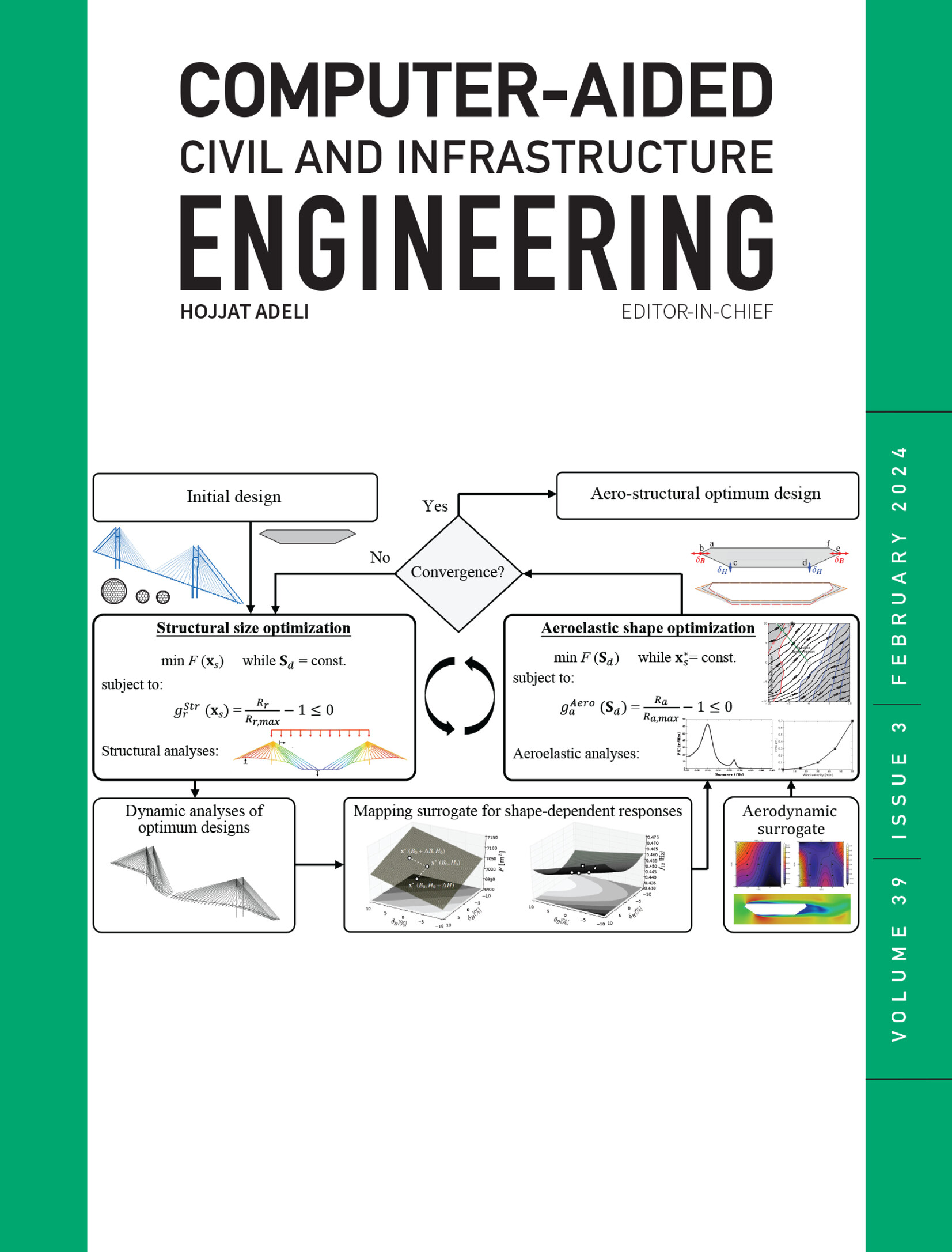车辙性能预测的双T模型集成数据增量和周期模式
IF 9.1
1区 工程技术
Q1 COMPUTER SCIENCE, INTERDISCIPLINARY APPLICATIONS
引用次数: 0
摘要
准确的车辙预测对于交通安全和道路维护至关重要,能够实现及时的干预和具有成本效益的战略。这种预测仍然具有挑战性,特别是在路段数据有限的情况下。由于传统方法在数据稀缺性和复杂性的情况下挣扎,在本研究中,通过合并TimeGAN和TimesNet开发了Double - T模型。使用TimeGAN将数据集从2925条增加到7578条,而使用TimesNet捕获多尺度周期特征。该模型对数据集的训练、验证和测试子集的决定系数(R2)分别为0.939、0.935和0.893。增大预测区间会导致模型性能下降。对比实验表明,双T模型优于传统回归模型,指出影响车辙的关键因素包括路面年龄、交通荷载、路面厚度和温度。本文章由计算机程序翻译,如有差异,请以英文原文为准。
A Double‐T model for rutting performance prediction integrating data augmentation and periodic patterns
Accurate rutting prediction is crucial for traffic safety and road maintenance, enabling timely interventions and cost‐effective strategies. Such prediction remains challenging, especially with limited data across road segments. As traditional methods struggle in the case of data scarcity and complexity, in this study, a Double‐T model is developed by merging TimeGAN and TimesNet. TimeGAN is used to augment the dataset from 2925 to 7578 records, while TimesNet is applied to capture multi‐scale periodic features. The model has achieved determination coefficients (R 2 ) of 0.939, 0.935, and 0.893 for the training, validation, and testing subsets of the dataset. Increasing the prediction intervals has led to a decline in the model performance. Comparative experiments demonstrate the superior performance of the Double‐T model over conventional regression models, pinpointing that key factors influencing rutting include pavement age, traffic load, pavement thickness and temperature.
求助全文
通过发布文献求助,成功后即可免费获取论文全文。
去求助
来源期刊
CiteScore
17.60
自引率
19.80%
发文量
146
审稿时长
1 months
期刊介绍:
Computer-Aided Civil and Infrastructure Engineering stands as a scholarly, peer-reviewed archival journal, serving as a vital link between advancements in computer technology and civil and infrastructure engineering. The journal serves as a distinctive platform for the publication of original articles, spotlighting novel computational techniques and inventive applications of computers. Specifically, it concentrates on recent progress in computer and information technologies, fostering the development and application of emerging computing paradigms.
Encompassing a broad scope, the journal addresses bridge, construction, environmental, highway, geotechnical, structural, transportation, and water resources engineering. It extends its reach to the management of infrastructure systems, covering domains such as highways, bridges, pavements, airports, and utilities. The journal delves into areas like artificial intelligence, cognitive modeling, concurrent engineering, database management, distributed computing, evolutionary computing, fuzzy logic, genetic algorithms, geometric modeling, internet-based technologies, knowledge discovery and engineering, machine learning, mobile computing, multimedia technologies, networking, neural network computing, optimization and search, parallel processing, robotics, smart structures, software engineering, virtual reality, and visualization techniques.

 求助内容:
求助内容: 应助结果提醒方式:
应助结果提醒方式:


